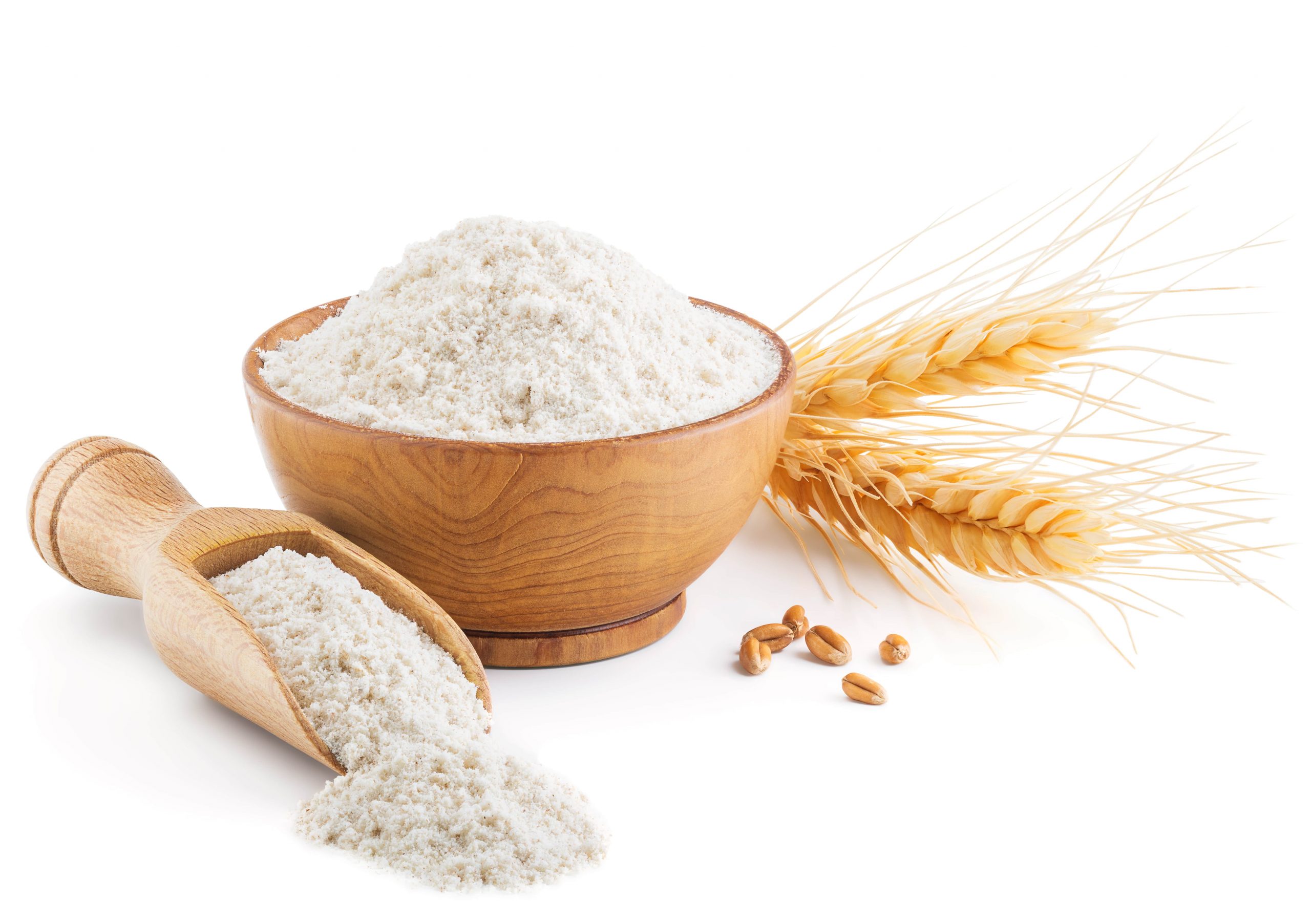Flour often has self-life ranging from 3-8 months fi it is properly stored in a cool dry place. The flour’s shelf-life is also depended on the type of the flour and the storage method.
Flour is the product of grinding foods, seeds, or grains into powder. Though flour was traditionally produced from wheat grain only, today, other foods, such as almond, coconut, chia seed, flaxseed, corn, and other gluten-free grains can also be turned into flour. Some people buy flour and keep it in the pantry for longer periods- some past their labeled expiry date. This begs the question, how long can flour stay safe? We will examine whether flour can go bad, outline how to store your flour properly, and look into the dangers of consuming expired flour.
The Shelf Life of Flour
Flour’s shelf life or the time it takes before it begins to spoil is affected by various factors, such as humidity, type of flour, temperature, and even storage method. Many flours stay healthy between 3-8 months at recommended temperatures past the indicated expiry date. Nevertheless, most shelf life is dependent on the ingredient of the flour, the type of flour, and the method of storage.
Type of Flour
A flour’s processing level differs in grades, and it affects its shelf life. Flour can be categorized depending on the source ingredient, such as arrowroot, corn, and wheat, and this source also impacts the flour’s shelf life. For instance, whole-wheat flour often has a shorter shelf life than all-purpose white flour due to the difference in their processing procedure. All-purpose white flour undergoes many stages of refining, stripping off the bran and germ from the grain. The resulting flour only comes from the starchy endosperm, which is known to stay fresh longer.
On the other hand, whole-wheat flour is consisting of three parts-the germs, bran, and endosperm. Bran and germ are full of oil, making them prone to quick spoilage. Fats are known to deteriorate and spoil when exposed to moisture, light, or air, causing objectionable odor and taste. The inclusion of bran and germ in whole-wheat flour explains why it has a shorter safe life than all-purpose white flour. Other gluten-free flour, such as coconut flour, flax and chia seed flour, and almond flour, have high oil content subject to rancidity than white wheat flour. Some also combine several gluten-free products, such as root-based flour and nuts flour, for increased nutrients; however, these too are subject to easy spoilage and can acquire mold because of their high moisture content.
Storage Methods
The way you store your flour will significantly impact how long it stays safe on your shelf. The department of Agriculture in the United States (USDA) categorizes flour as shelf-stable, meaning it can last longer when stored at room temperature. For you to preserve the freshness of your flour, you should keep it in a completely sealed container in a cool, dry area in your house.
You can also refrigerate or freeze the flour in an airtight container to improve its shelf life since organisms may find it hard to grow in these extreme temperatures. One study observed that all-purpose flour could last for up to one year when refrigerated and two frozen, though it only lasts 6-8 months when kept in a dry, cool place on the shelf. However, when using a fridge or freezer for preserving your flour, ensure it is kept away from water and moisture that could cause mold growth. Before refrigerating it, you can seal the flour in an airtight container like a food bin or plastic bag. Before using flour from the fridge or freezer, you should keep it at room temperature to prevent lumping.
How can I Tell if My Flour Has Gone Bad?
Flour sold from the supermarkets comes with labels indicating best-by-dates, so by checking on the package bag, you will know how long the flour you are about to buy will stay fresh. Nevertheless, the dates on the package do not guarantee safety because the flour may still be safe for use even if it is past its indicated best-by date.
One recommended way to establish whether the flour is safe for use is to smell it. Fresh flour often has a neutral smell; on the contrary, spoilt flour has a tangent smell and can sometimes be musty, stale, or sour when tasted. Also, check the color of the flour; spoilt ones tend to show discoloration. If water or moisture slipped into the flour, you might notice large clumps of molds on it. If that is the case, you should throw the entire bag in the bin because aflatoxin from the mold can be fatal if consumed. You could devise a formula for your family to use old flour first before using new ones. This way, you prevent food wastage and avoid poisoning yourself by eating expired flour.
Risks Associated by Expired Flour.
The molecular structure of flour that has gone rancid is different from fresh flour, which means that spoilt flour could produce dangerous compounds. However, recent studies have not discovered any damaging effects of consuming rancid flour. Foods made with rancid flour could taste bad and are unlikely to damage your health if consumed in small quantities.
On the other hand, eating food made from moldy flour is considered foul-tasting and dangerous. Though not all molds are health-damaging, some are known to harbor harmful chemicals called mycotoxins, resulting in uncomfortable symptoms, including diarrhea and vomiting. Mycotoxins can also cause serious illnesses, such as liver disease and cancer, if taken in large quantities and over longer periods. Therefore, if your flour smells bad or has signs of mold, you do well to throw it out.
The Bottom Line
Most flours have a shelf-life of between 3-8 months and then go bad. The all-purpose white four last longer than whole-grain wheat flour because of its low-fat content. Whole-grain flour contains germ and grain that is oily and attracts moisture, making it spoil sooner. You can extend the safety life of your flour by storing it in an airtight container placed in a cool, dry place. Additionally, you can keep the container in the fridge or freezer away from moisture or water. A bad odor or discoloration of the flour would signify it is spoilt and should not be eaten. Though no recorded health hazard of consuming rancid flour, eating moldy flour for a long time and in huge amounts can cause diarrhea, vomiting, and sometimes serious illness, such as cancer and liver disease.
- Bell Peppers 101: Nutrition Facts and Health Benefits - April 19, 2024
- Products That Assist with Stress Relief - September 21, 2023
- TRÈFLE – THE ROAD TO THE 15TH - July 29, 2023







